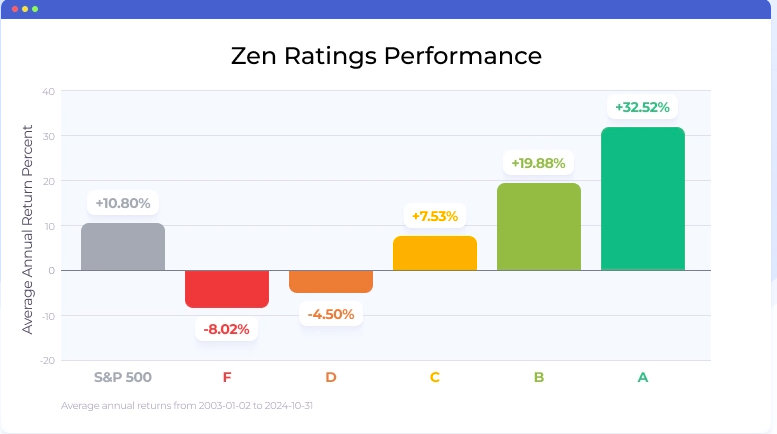20 Top Advice To Picking AI Stock Investing Analysis Websites
20 Top Advice To Picking AI Stock Investing Analysis Websites
Blog Article
Top 10 Tips On Assessing The Customer Support Of Ai Platform For Predicting/Analyzing Trades
Customer support is a critical aspect when selecting the best AI trading platform for predicting or analyzing stocks. Support that is quick and reliable will make all the difference when it comes to having to solve issues, increase the use of the platform, and ensure a smooth trading environment and so on. Here are 10 suggestions to assess the support provided by these platforms.
1. Review the availability of support
24/7 support: Make sure that the platform provides 24/7 support, particularly important for international markets and real-time trading.
Hours of business If there isn't 24/7 support You should make sure that support is in place during your business hours.
Find holiday coverage.
2. Test Response Times
Initial response. Send a test question to support to see how fast they'll be able to respond.
Resolution time: Calculate the length of time it takes to resolve a problem.
Live chat is available be sure to check the response time and the effectiveness.
3. Examine Support Channels
Multiple channels: Check that the platform supports different channels, including email, telephone, livechat, social media, etc.
Priority channel: Determine if your preferred support channel (e.g., phone or chat) is available and trustworthy.
Self-service options: Look for a complete information base, FAQs, or community forums to speed up solving problems.
4. Assess the Quality of Support
Expertise: Ensure that the support personnel you choose are knowledgeable on issues related to trading, platforms as well as technical issues.
Test the ability of your support agent to solve complex problems and escalate them accordingly.
Professionalism: Find out if the support interactions are courteous professional, efficient and friendly.
5. Look for Account Managers who are committed
Premium support: Check to see if users of higher-tier plans, or those who are institutional users have access to a specific account manager.
Account managers who offer an efficient and customized service.
Relationship Building: Ensure that the account managers you collaborate with are always available. It is also possible to build connections over time.
Check the supporting documentation
Knowledge base: Ensure that the platform is well-organized and searchable knowledge base that includes tutorials, guides and troubleshooting tips.
Video tutorials: Check whether there are any video tutorials on the market.
API documentation: If you're a developer ensure that the platform has precise and clear API documentation.
7. Assess community and peer support
Forums for users - Check to see if the platform provides a forum or a community in which users can share strategies and exchange solutions.
Social media groups: Search for groups on social media that are not official (e.g., Reddit, Facebook, LinkedIn) where members discuss the platform.
Community engagement: Check whether the platform's staff actively participates in discussions with the community or forums.
8. Evaluate Escalation Processes
Issue escalation: Ensure there's clearly defined procedures for escalating unresolved issues to support at a higher level or management.
Follow-up. Make sure whether support is in contact when the issue is resolved.
Feedback loop: See whether feedback is collected from the users to enhance the support services.
9. Test Support in Critical situations
Contact Customer Support during times of high-volatility to find out how they react.
Technical issues: Simulate a technical issue (e.g. login issue, data discrepancy) to test how support handles it.
Trade execution - Check that you have support available to assist in urgent trade issues (e.g. orders not being executed, delays in execution).
10. Review User Feedback on Support
Online reviews: Use platforms such as copyright G2 or Reddit to read user reviews and determine general satisfaction.
Find reviews and case studies that focus on positive experiences.
Check the platform to see the way it handles complaints, negative feedback and customer support.
Bonus Tips
Support for trial period Support for the trial period during the free trial or demo time to test its quality.
Assistance for your language: If English isn't your primary language, you need to look whether it's supported.
Training and onboarding: See if the platform offers onboarding classes or other training to assist new users in getting started.
These tips will assist you in evaluating the quality of customer service provided by AI trading platforms that forecast or analyze price fluctuations in stocks. This way, you'll be able select a platform with prompt, reliable and efficient assistance. Solid customer support can enhance your experience and can make the most of all options. View the recommended best ai stock for website recommendations including ai stock trading bot free, best ai stock trading bot free, best ai for trading, ai for investing, ai trading, ai trading, ai investment platform, best ai stock, ai stock trading, market ai and more.
Top 10 Tips To Evaluate The Speed And Latency In Ai Platform For Analyzing And Stock Predicting
Latency and speed are critical elements when it comes to looking at AI stock prediction and analysis platforms, specifically for active traders, algorithmic traders, as well as high-frequency traders. Even milliseconds of delay can impact trade execution and profitability. Here are the top 10 strategies for evaluating the speed and latency of these platforms:
1. Real-time data feeds to be evaluated
Data delivery speed: Ensure that the platform delivers real-time data with a minimum delay (e.g., less than a millisecond delay).
Data source proximity - Check to see if your servers of your platform are within major exchanges. This will reduce the speed of data transmission.
Data compression: Determine whether your platform is using efficient techniques for data compression to speed up data delivery.
2. Time to test trade execution
Order processing time The time it takes for the platform to process and complete trades after you've submitted an order.
Direct market access (DMA). Check to see if the platform you are using supports DMA. DMA allows orders sent directly to an exchange to be processed with no intermediaries.
Execution reports: Find out whether the platform has detailed execution reports, including timestamps for orders, confirmation, and fill.
3. Check the Platform Receptivity
User interface (UI), speed: Test the platform’s response time to your inputs.
Chart updates. Verify that charts and visualizations are updated in real-time update that is not lag.
Performance of mobile apps If you are you are using a mobile application be sure that it is running as quickly as the desktop version.
4. Check for Low-Latency infrastructure
Server locations: Ensure the platform uses low-latency servers in close proximity to major financial hubs or exchanges.
Co-location Services: Find out whether the platform permits co-location. This allows you to save your trading algorithms in servers located near the Exchange.
High-speed network: Determine if the platform utilizes high-speed fibre-optic networks, or other technologies with low latency.
5. Evaluate Backtesting and Simulation Speed
Test how fast the platform analyzes and processes old data.
Platform latency should be low enough to allow live simulations of trades in real time.
Parallel processing: Check whether your system uses parallel or distributed computing to speed up calculations.
6. Calculate the API Latency
API response: The platform's API is evaluated by the amount of time it takes to answer requests.
Rate limits: Make sure that the API has reasonable limits on rates in order to avoid delays when high-frequency trading is taking place.
WebSocket Support: Determine whether your platform is compatible with WebSocket protocols for streaming data in real-time and with low latency.
7. Test the stability of your platform using Load
Create scenarios for high-volume trading to test whether the platform is reliable and stable.
Check your platform out during periods of extreme market volatility.
See if there are tools available for testing strategies for extreme circumstances.
8. Assess Connectivity and Network
Speed requirements for internet: Make sure your internet connection has the platform's recommended speed to achieve maximum performance.
Reliable connections: Check if your platform has redundant internet connections. This will allow you to avoid interruptions.
VPN latency. If using the VPN be sure to check whether it creates a significant amount of latency.
9. Make sure to check for speed enhancement features
Pre-trade analytics: Make sure that the platform offers pre-trade analytics to optimize the speed of execution and order routing.
Smart Order Routing (SOR). Verify that the platform uses SOR in order to locate the quickest and most cost efficient execution sites.
Latency monitoring: Determine if your platform has tools that let you analyze and monitor latency real-time.
10. Review Feedback from Users and Benchmarks
User feedback: Read user reviews to determine the performance of the platform in terms of speed and latency.
Third-party Benchmarks: Search for independent benchmarks that compare the speed of a platform with its peers.
Case studies: Check if the platform offers cases studies or testimonials that showcase its ability to work with low-latency.
Bonus Tips
Utilize the trial period or free demo period to evaluate your platform's performance and speed under real-world conditions.
Customer support: determine if the platform has assistance with issues related to latency or for optimization.
Hardware requirements: Determine whether the platform needs specific hardware (e.g. high-performance computers) to operate at its maximum speed.
By following these tips to evaluate the performance and speed of AI platform for predicting or analyzing stocks and ensure that you select one that is compatible with your requirements for trading and reduces delays. Low latency, especially for high frequency and algorithmic trading, is crucial. Even minor delays have the potential to significantly affect profits. Read the best full report on can ai predict stock market for website examples including how to use ai for copyright trading, ai investment tools, can ai predict stock market, best ai trading platform, chart analysis ai, investing with ai, ai stock investing, ai stock predictions, ai stock predictions, trading ai tool and more.